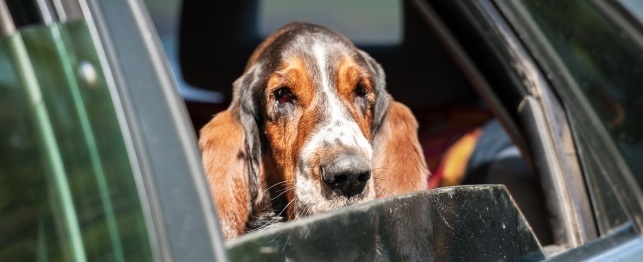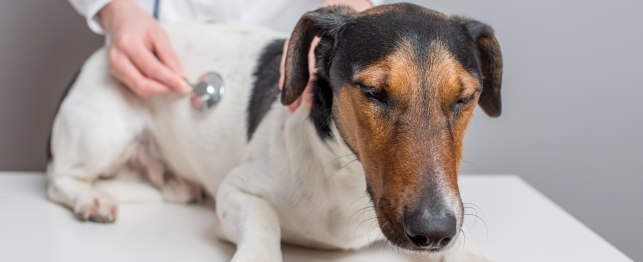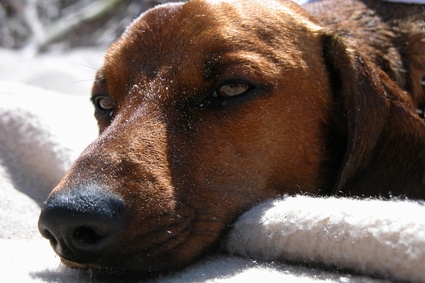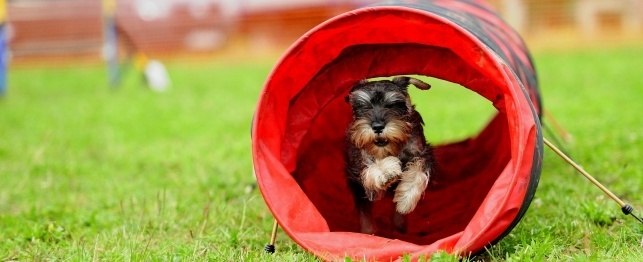Help Your Dog Survive a House Fire

Dogs
A house fire is something you think will never happen to you, until it does. At least, that is what I thought. About 10 years ago I was working at a veterinary emergency clinic when I got a phone call that my house was on fire. I had 2 pets inside and I was in full panic mode. I wasn’t worried about the contents; I didn’t care about the clothes, TV, or even photos - all I cared about as I drove home was my pets’ safety. It was terrifying, and I hope that you never have the experience it as well.
Here are some startling house fire facts and data:
-
Each year,
-
over 1.7 million fires occur the United States,
-
over 3,000 people lose their lives,
-
there are over 17,500 fire related injuries to humans,
-
over 500,000 pets die in house fires,
-
pets start nearly 1,000 fires,
-
and over 11 billion dollars of damages occur.
Here are a few things you can do to help your dog survive or, better yet, prevent a house fire.
-
Look for fire hazards in your home such as overloaded outlets (multiple extension cords or plugs wired into one outlet), extension cords that have been “daisy chained” together, and frayed cords.
-
Never, ever allow your dog to be around unattended candles.
-
Use flameless candles. They can give the ambiance of a traditional candle but are much safer. A second option are covered candles holders.
-
Ensure you have fire alerts stickers or signs on your windows so fire personnel know how many and what kinds of pets you have in your home. Most stickers will say something such as “Fire Personnel, we have X dogs, X cats, and X other pets in the house.” You can download one for free here.
-
Keep fire extinguishers on each level of your house, especially next to fireplaces and in the kitchen.
-
Keep collars on your pets and leashes by both the front and back doors so you can quickly lead them to safety in the case of a fire. Make sure your dog has updated identification on his or her tag. Cat owners can keep a pile of pillowcases by the doors so they can quickly escape with their cats in case things are really bad. (This not only keeps the cat from running away, but also protects them from smoke inhalation.)
-
Monitor your smoke detectors to ensure they are in good working order. Connect your smoke detectors to your home alarm system so if you are not home and a fire occurs, the fire department will be notified.
-
Be extra care with stove knobs. Some experts recommend removing stove knobs before leaving the house. We have read devastating reports of curious dogs jumping up to smell what’s on the stove and turning knobs too high, resulting in fires.
-
Take special care with glass water bowls on outdoor wooden decks. Reports have noted cases where sun’s rays were magnified by the glass, heating up deck wood and actually causing fires. Use stainless or ceramic bowls instead.
-
Lastly, take a minute to understand the most common causes for house fires. By knowing what they are, you can be more attentive to those possible situations. According to the National Fire Protection Association, the following are the most common causes of house fires:
- Cooking: Up to 40 percent of all house fires are caused by cooking-related incidents. A common one is leaving an oven or stove unattended.
- Kids playing with fire: Another very common source of fires is kids igniting matches or a lighter during play.
- Smoking: This happens quite frequently when someone that falls asleep while smoking and the cigarette falls into an upholstered chair, which ignites and fills the house with smoke.
- Fault heating: Electrical shorts and overloads related to the furnace can be the culprit of house fires, as well as portable space heaters. Get your furnace serviced on a regular basis to avoid a problem.
- Electrical problems: The overuse of extension cords can cause them to spark and ignite.
- Candles: The open flame can be knocked over or be placed too close to papers or other flammable materials. Never, ever leave candles unattended. Curious pets frequently knock over candles; excited dogs with wagging tails may knock a candle to the floor and cats may swish their tails through the flame, then run in panic and spread the fire.
- Fireplace: In addition to the risks of an open flame, not opening the damper or flue or slacking off on fireplace care (that is, not cleaning it and letting the chimney get backed up) can cause dangerous situations that are prime for fires and carbon monoxide problems.
- Dryers: This is a big one. Improper dryer vents, flammable dryer sheets, and clogged venting are all causes of dryer-related fires. Clear lint after each load of clothes and keep flammable material away from your dryer at all times.
- Flammables in the house: Use care when storing flammable materials (fuels, oils, etc.). Don’t place them next to a possible source of flame.
- Christmas trees: Poorly watered trees and overloaded extension cords can turn a holiday tragic. Keep your tree watered and unplug the lights when you are away from the house. Use the minimal number of extension cords and always follow the manufacturer’s instructions.
A key part of being a responsible pet parent is to plan for unexpected emergencies and do what you and to prevent them. If possible, make a fire drill plan with your family and practice it with your dog. You’ll be glad you did.
I hope this article on common fire hazards and fire prevention helped keep your dog safe in the case of a fire.


 10 Tips that Can Keep Your Pet Safe!
10 Tips that Can Keep Your Pet Safe!
10 Tips that Can Keep Your Pet Safe!
10 Tips that Can Keep Your Pet Safe!
 The Dumbest Things Dog Owners Do
The Dumbest Things Dog Owners Do
The Dumbest Things Dog Owners Do
The Dumbest Things Dog Owners Do
 Natural Remedy for Dog Coughing
Natural Remedy for Dog Coughing
Natura
Natural Remedy for Dog Coughing
Natural Remedy for Dog Coughing
Natura
 Thoughts on Selection: Selection Equals Breeding Success
Breeders are, or should be, the bes
Thoughts on Selection: Selection Equals Breeding Success
Breeders are, or should be, the bes
 Suffocation Hazards for Dogs
Suffocation Hazards for Dogs
Suffocation Hazards for Dogs
Suffocation Hazards for Dogs